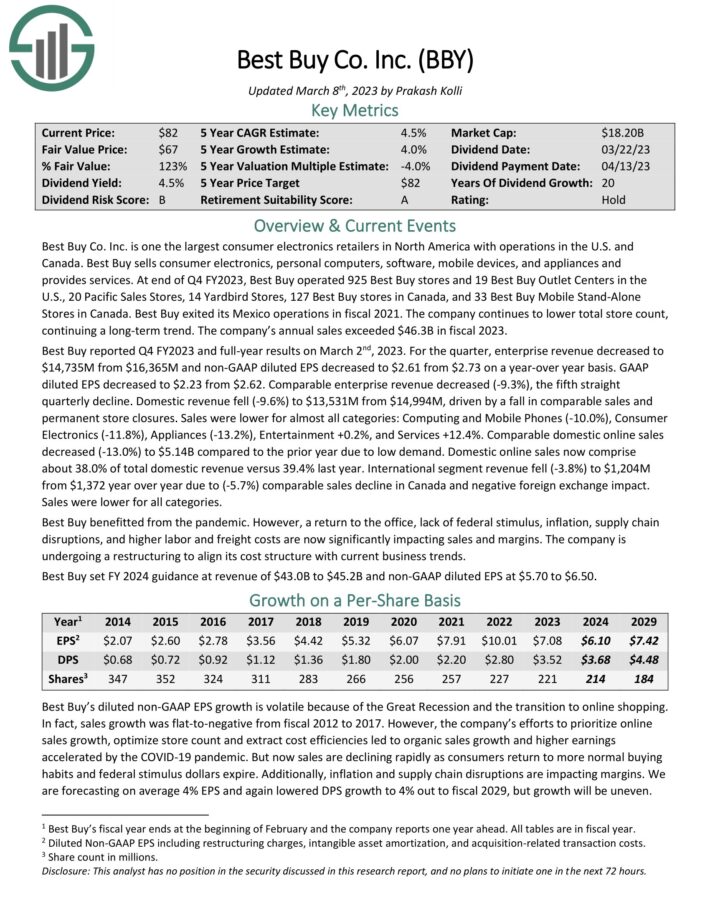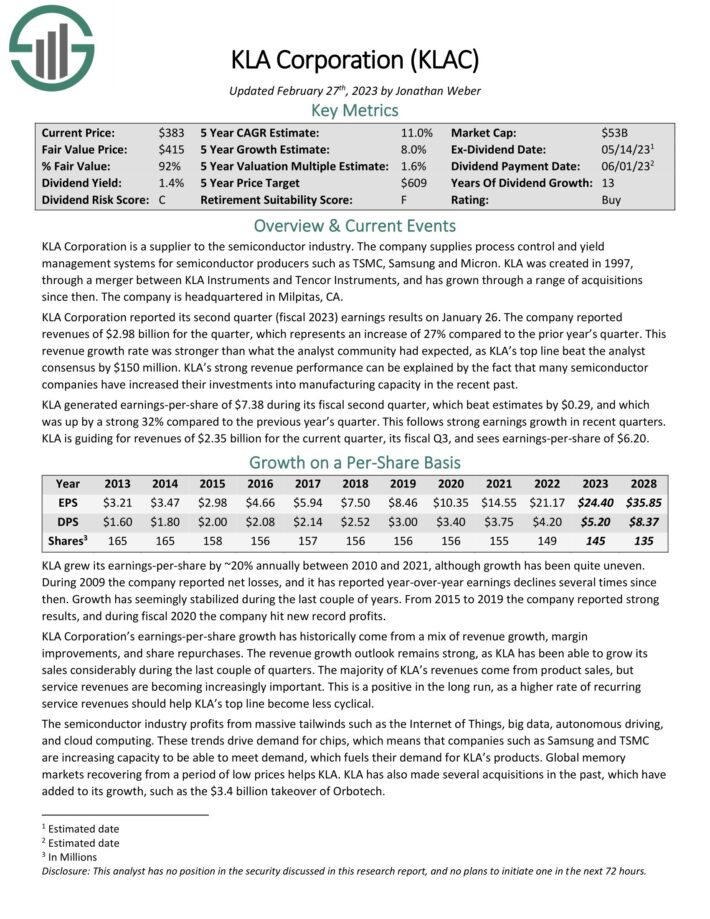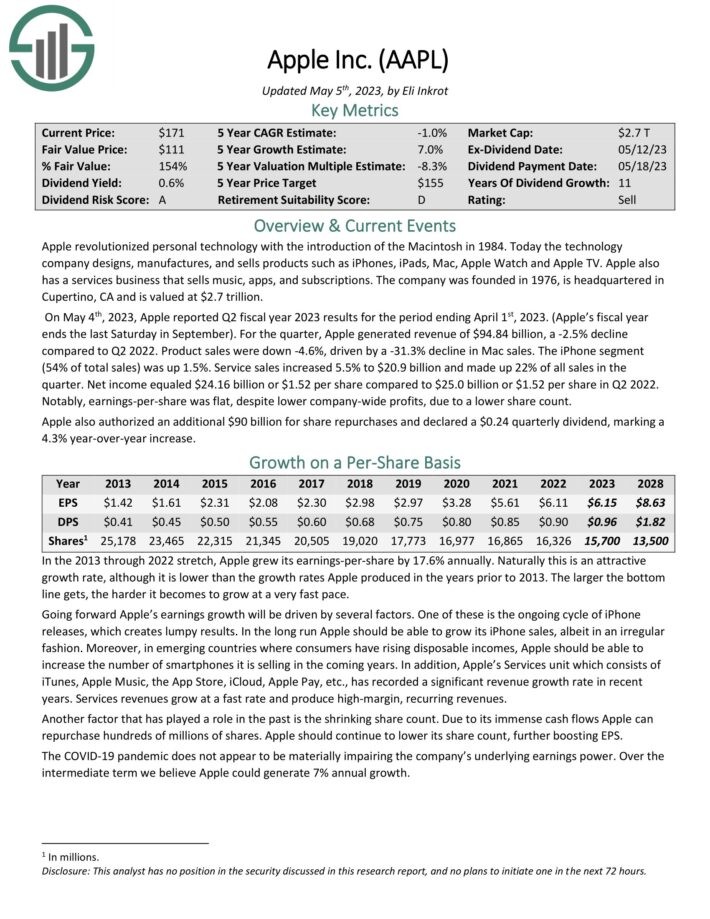First Published on May 16th, 2023 by Bob Ciura for SureDividend
Spreadsheet data updated daily; Top 10 list is updated when the article is updated
Return on invested capital, or ROIC, is a valuable financial ratio that investors can add to their research process.
Understanding ROIC and using it to screen for high ROIC stocks is a good way to focus on the highest-quality businesses.
With this in mind, we ran a stock screen to focus on the highest ROIC stocks in the S&P 500.
You can download a free copy of the top 100 stocks with the highest ROIC (along with important financial metrics like dividend yields and price-to-earnings ratio) by clicking on the link below:

Using ROIC allows investors to filter out the highest-quality businesses that are effectively generating a return on capital.
This article will explain ROIC and its usefulness for investors. It will also list the top 10 highest ROIC stocks right now.
Table Of Contents
You can use the links below to instantly jump to an individual section of the article:
What Is ROIC?
Put simply, return on invested capital (ROIC) is a financial ratio that shows a company’s ability to allocate capital. The common formula to calculate ROIC is to divide a company’s after-tax net operating profit, by the sum of its debt and equity capital.
Once the ROIC is calculated, it is evaluated against a company’s weighted average cost of capital, commonly referred to as WACC. If a company’s WACC is not immediately available, it can be calculated by taking a weighted average of the cost of a company’s debt and equity.
Cost of debt is calculated by averaging the yield to maturity for a company’s outstanding debt. This is fairly easy to find, as a publicly-traded company must report its debt obligations.
Cost of equity is typically calculated by using the capital asset pricing model, otherwise known as CAPM.
Once the WACC is calculated, it can be compared with the ROIC. Investors want to see a company’s ROIC exceed its WACC. This indicates the underlying business is successfully investing its capital to generate a profitable return. In this way, the company is creating economic value.
Generally, stocks generating the highest ROIC are doing the best job of allocating their investors’ capital. With this in mind, the following section ranks the 10 stocks with the highest ROIC.
The Top 10 Highest ROIC Stocks
The following 10 stocks have the highest ROIC. Stocks are listed in order from lowest to highest.
High ROIC Stock #10: Darden Restaurants Inc. (DRI)
- •Return on invested capital: 30.8%
Darden Restaurants Inc. is a restaurant company with a portfolio of brands including Olive Garden, LongHorn Steakhouse, Cheddar’s Scratch Kitchen, Yard House, The Capital Grille, Seasons 52, Bahama Breeze, and Eddie V’s. The company employs 165,000 team members, and as of the fiscal year ending May 31, 2022, it owns and operates over 1,800 restaurants in the United States and Canada, and 71 franchisees serve restaurants.

On March 23rd, 2023, Darden Restaurants Inc. reported the third quarter results for Fiscal Year (FY) 2023, ending on February 26, 2023. The company completes its fiscal year at the end of May. The company saw total sales of $2.8 billion for the quarter, an increase of 13.8%, driven by a blended same-restaurant sales increase of 11.7% and sales from 35 net new restaurants compared to the third quarter of FY2022. Olive Garden, LongHorn Steakhouse, and Fine Dining saw a sales increase of 12.3%, 10.8%, and 11.7% year-over-year (YoY), respectively.
Click here to download our most recent Sure Analysis report on Darden Restaurants Inc. (preview of page 1 of 3 shown below):

High ROIC Stock #9: Best Buy Co. Inc. (BBY)
- •Return on invested capital: 35.5%
Best Buy Co. Inc. is one of North America’s largest consumer electronics retailers, with operations in the U.S. and Canada. Best Buy sells consumer electronics, personal computers, software, mobile devices, and appliances and provides services.
Best Buy reported Q4 FY2023 and full-year results on March 2nd, 2023. For the quarter, enterprise revenue decreased to $14,735M from $16,365M and non-GAAP diluted EPS decreased to $2.61 from $2.73 on a year-over year basis.
GAAP diluted EPS decreased to $2.23 from $2.62. Comparable enterprise revenue decreased (-9.3%), the fifth straight quarterly decline. Domestic revenue fell (-9.6%) to $13,531M from $14,994M, driven by a fall in comparable sales and permanent store closures.
Click here to download our most recent Sure Analysis report on Best Buy Co. Inc. (preview of page 1 of 3 shown below):

High ROIC Stock #8: KLA Corporation (KLAC)
- •Return on invested capital: 39.4%
KLA Corporation is a supplier to the semiconductor industry. The company supplies process control and yield
management systems for semiconductor producers such as TSMC, Samsung and Micron. KLA was created in 1997,
through a merger between KLA Instruments and Tencor Instruments, and has grown through a range of acquisitions
since then.

KLA Corporation reported its second quarter (fiscal 2023) earnings results on January 26. The company reported revenues of $2.98 billion for the quarter, which represents an increase of 27% compared to the prior year’s quarter.
This revenue growth rate was stronger than what the analyst community had expected, as KLA’s top line beat the analyst consensus by $150 million. KLA’s strong revenue performance can be explained by the fact that many semiconductor companies have increased their investments into manufacturing capacity in the recent past.
KLA generated earnings-per-share of $7.38 during its fiscal second quarter, which beat estimates by $0.29, and which was up by a strong 32% compared to the previous year’s quarter.
Click here to download our most recent Sure Analysis report on KLA Corporation. (preview of page 1 of 3 shown below):

High ROIC Stock #7: Ulta Beauty, Inc. (ULTA)
- •Return on invested capital: 45.0%
Ulta has significantly impacted the American beauty retail industry with its strong brand power. Currently operating exclusively in the US, the company had planned a Canadian expansion, which was later cancelled before the pandemic outbreak. Ulta’s loyalty program is highly regarded and among the best in the retail sector, a common attribute of the leading retailers that I cover.
As of the latest update, the program had 39 million members, which represents a 9% YoY increase and accounts for roughly a quarter of all women in the US. This group generates 95% of sales and averages $200 of spend per year. The marketing and data advantages provided by this program are immensely valuable and offer a competitive edge for the company.
In the beauty product sales industry, top brands hold significant power and determine the locations where their products are sold. These high-end brands are highly selective, and the long-standing relationships developed over time prevent newcomers and some e-commerce companies from accessing their products. Initially, this may not seem economically feasible. However, the image of luxury products is crucial. This gives Ulta a nearly impenetrable advantage that few retailers can match.
High ROIC Stock #6: Gen Digital (GEN)
- •Return on invested capital: 49.1%
Gen Digital was formed after the merger of NortonLifeLock and Avast. The company provides security solutions for consumers around the world. It offers Norton 360, an integrated platform providing security with a subscription model for personal computers and mobile devices.
It also offers Norton and LifeLock identity theft protection solution that offers monitoring, alerts, and restoration services to its customers. The company also provides Norton Secure VPN solutions.
GEN stock has a market capitalization above $13 billion. Shares have a current dividend yield of 2.3%.
High ROIC Stock #5: Lowe’s Companies (LOW)
- •Return on invested capital: 56.8%
Lowe’s Companies is the second-largest home improvement retailer in the US (after Home Depot). Lowe’s operates or services more than 2,200 home improvement and hardware stores in the U.S. and Canada.
Lowe’s reported fourth quarter and full year 2022 results on March 1st, 2023. Total sales for the fourth quarter came in at $22.4 billion compared to$21.3 billion in the same quarter a year ago. Comparable sales decreased 1.5%, while the U.S. home improvement comparable sales declined 0.7%. Adjusted net earnings, which excludes the pre-tax transaction costs associated with the sale of the Canadian retail business, rose 28% year-over-year to $2.28 per share.
For the full year, Lowe’s generated diluted EPS of $10.17, a 15% decrease compared to $12.04 in 2021. The company repurchased 10 million shares in the fourth quarter for $2.0 billion. Additionally, they paid out $643 million in dividends. For the full year, Lowe’s repurchased 71 million shares for $14.1 billion and paid $2.4 billion in dividends.
The company initiated their fiscal 2023 outlook and believe they can achieve diluted EPS in the range of $13.60 to $14.00 on total sales of roughly $89 billion.
Click here to download our most recent Sure Analysis report on Lowe’s (preview of page 1 of 3 shown below):

High ROIC Stock #4: Apple, Inc. (AAPL)
- •Return on invested capital: 59.5%
Apple revolutionized personal technology with the introduction of the Macintosh in 1984. Today the technology company designs, manufactures and sells products such as iPhones, iPads, Mac, Apple Watch and Apple TV.Apple also has a services business that sells music, apps, and subscriptions.
Apple is the #1 holding of Berkshire Hathaway (BRK.B), making the technology giant one of the top Warren Buffett stocks. Apple is also a top holding of other influential investors, such as Kevin O’Leary.
On February 2nd, 2023, Apple reported Q1 fiscal year 2023 results for the period ending December 31st, 2022 (Apple’s fiscal year ends the last Saturday in September). For the quarter, Apple generated revenue of $117.154 billion, a -5.5% decline compared to Q1 2022.
Product sales were down -7.7%, driven by an -8.2% decline in iPhones (56% of total sales). Service sales increased 6.4% to $20.8 billion and made up 17.7% of all sales in the quarter. Net income equaled $29.998 billion or $1.88 per share compared to $34.630 billion or $2.10 per share in Q1 2022.
Click here to download our most recent Sure Analysis report on AAPL (preview of page 1 of 3 shown below):

High ROIC Stock #3: Bath & Body Works (BBWI)
- •Return on invested capital: 87.0%
Bath & Body Works is a specialty retailer of home fragrance, body care, and soaps and sanitizer products. Its brands include Bath & Body Works, White Barn, and more.
The company operates over 1,700 company-operated retail stores and another 300+ international partner-operated stores. The company was formerly known as L Brands, Inc. and changed its name to Bath & Body Works, Inc. in August 2021.
High ROIC Stock #2: HP Inc. (HPQ)
- •Return on invested capital: 87.0%
Hewlett-Packard’s origins can be traced back to 1935 when two men started a business in a one-car garage. Over the past eight decades, the company has made significant contributions in electronic test equipment, computing, data storage, networking, software, and services.
HP reported its first quarter (fiscal 2023) results on February 28. The company reported revenue of $13.8 billion for the quarter, which missed the analyst consensus estimate, and which was down 19% from the previous year’s quarter.
Non-GAAP earnings-per-share totaled $0.75 during the first quarter, which was in line with the analyst consensus estimate. Earnings-per-share came in at the middle of management’s previous guidance range. The company currently forecasts earnings-per-share in a range of $0.73 to $0.83 for the second quarter.
Click here to download our most recent Sure Analysis report on HP Inc. (preview of page 1 of 3 shown below):

High ROIC Stock #1: AutoZone Inc. (AZO)
- •Return on invested capital: 180.5%
After opening its first store on July 4th, 1979, AutoZone has grown into the leading retailer and distributor of automotive replacement parts and accessories, with more than 6,000 stores in the U.S., Puerto Rico, Mexico, and Brazil. AutoZone carries new and re-manufactured parts, maintenance items, and accessories for cars, SUVs, vans, and light trucks.
AutoZone has proven to be recession–resistant thanks to the nature of its business. During rough economic periods, the sales of new cars fall significantly, causing the average age of cars to increase. This favors AutoZone’s business. In the Great Recession, when most companies saw their earnings plunge, AutoZone grew its EPS by 18% in 2008 and another 17% in 2009.
Final Thoughts
There are many different ways for investors to value stocks. One popular valuation method is to calculate a company’s return on invested capital. By doing so, investors can get a better gauge of companies that do the best job of investing their capital.
ROIC is by no means the only metric that investors should use to buy stocks. There are many other worthwhile valuation methods that investors should consider. That said, the top 10 ROIC stocks on this list have proven the ability to create economic value for shareholders.
Related:
Dividend Stocks vs Treasuries: A Historical Comparison




